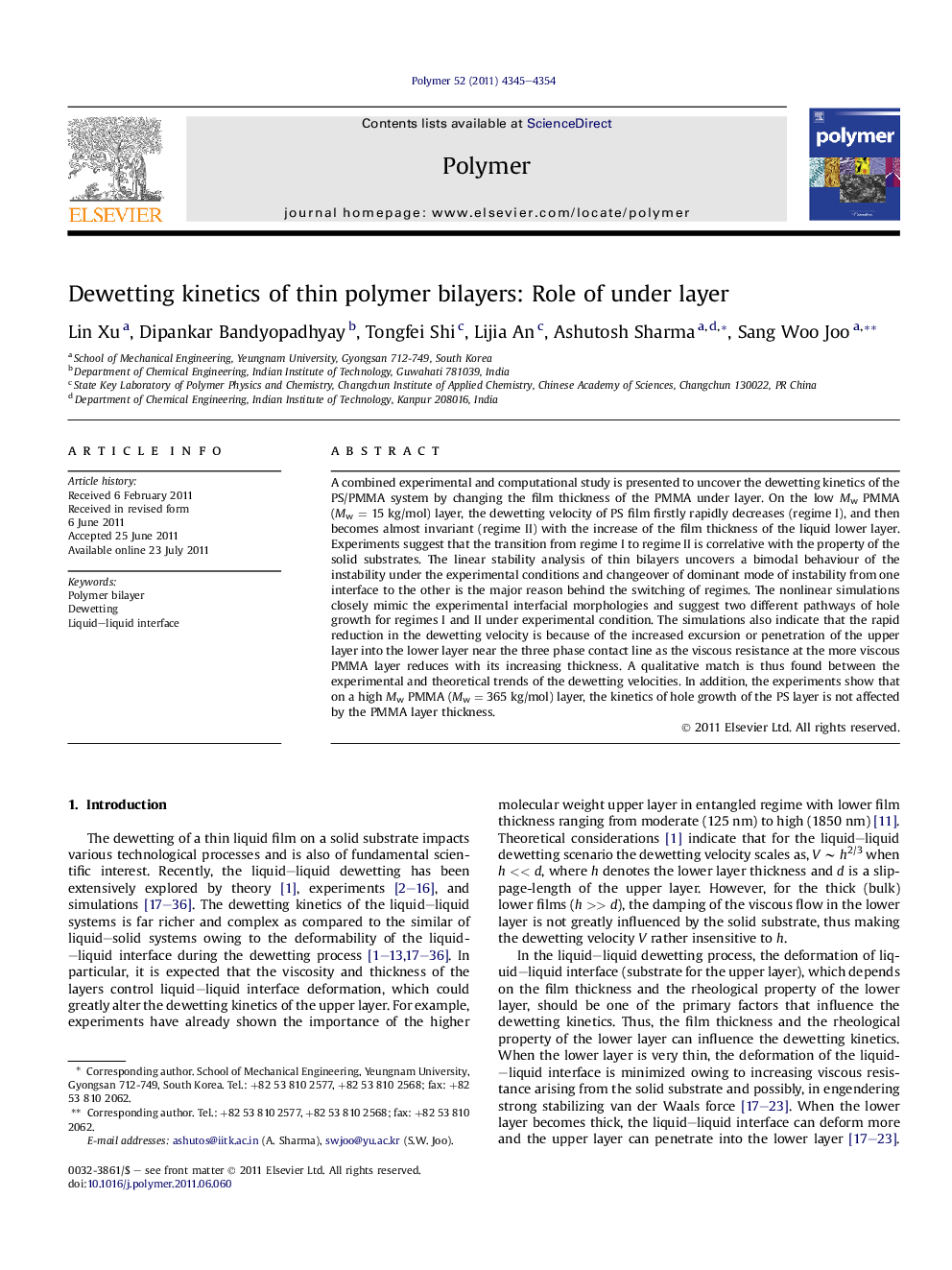| Article ID | Journal | Published Year | Pages | File Type |
|---|---|---|---|---|
| 5184312 | Polymer | 2011 | 10 Pages |
A combined experimental and computational study is presented to uncover the dewetting kinetics of the PS/PMMA system by changing the film thickness of the PMMA under layer. On the low Mw PMMA (Mw = 15 kg/mol) layer, the dewetting velocity of PS film firstly rapidly decreases (regime I), and then becomes almost invariant (regime II) with the increase of the film thickness of the liquid lower layer. Experiments suggest that the transition from regime I to regime II is correlative with the property of the solid substrates. The linear stability analysis of thin bilayers uncovers a bimodal behaviour of the instability under the experimental conditions and changeover of dominant mode of instability from one interface to the other is the major reason behind the switching of regimes. The nonlinear simulations closely mimic the experimental interfacial morphologies and suggest two different pathways of hole growth for regimes I and II under experimental condition. The simulations also indicate that the rapid reduction in the dewetting velocity is because of the increased excursion or penetration of the upper layer into the lower layer near the three phase contact line as the viscous resistance at the more viscous PMMA layer reduces with its increasing thickness. A qualitative match is thus found between the experimental and theoretical trends of the dewetting velocities. In addition, the experiments show that on a high Mw PMMA (Mw = 365 kg/mol) layer, the kinetics of hole growth of the PS layer is not affected by the PMMA layer thickness.
Graphical abstractDownload full-size image
